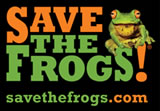Our Mission
Reptile and Amphibian Ecology International is a conservation and research organization striving to discover, document, and preserve the rich diversity of living reptiles and amphibians. Guided by strong scientific principles, we collect ecological data about these unsung species in some of the world's last wild places. Through spectacular photography, we scientifically document our discoveries while conveying the beauty and wonder of rare species and remote places to a wider public. Through education, volunteerism, and local empowerment, we offer people the experiences, skills, and tools to promote understanding and appreciation of the rich variety of life that surrounds and sustains them. Our central goal is to facilitate informed management decisions by people, governments, and land preservation organizations that will protect these fascinating animals and the land they need to survive.
Our Philosophy and Approach
We work with some of the most amazing, diverse, yet fragile creatures in the world: frogs, lizards, snakes, turtles, crocodilians. Add to that the bizarre wormlike amphibians, the caecilians, as well as the peculiar legless lizards called amphisbaenians, and you have a unique cast of characters living in nearly every ecosystem on earth. Lamentably, these species, nearly 15,000 in all, are often neglected as focal points in conservation.
Ask a child what her three favorite animals are and you might hear "lions, giraffes, and frogs". Yet there is only one species of each lion and giraffe, but over 5,600 species of frog--more than all of the species of mammal on Earth. These biases carry through to adulthood, and the priorities for conservation efforts and funding are likewise biased towards larger, and some would say cuter, animals.
So then why should we care so much about the littler contingency? For one thing, if you want to know if a population of jaguars is going to survive, you should first look at frogs. This is because frogs are "indicator species", which means that the health of frog communities can tell you a lot about the health of an entire ecosystem, jaguars included. Frogs are such good indicators of ecosystem health because of their skin: it is moist and permeable, so they are most exposed to environmental toxins and other environmental threats, such as global warming and habitat destruction. For these reasons, frogs and other amphibians are finally receiving just some of the attention they need, and conservation efforts and dollars are starting to come their way, albeit still lagging far behind large mammals and birds.
Most reptiles, on the other hand, with the exception of turtles, are all but neglected when it comes to conservation priorities. Of the 7,200 species worldwide, only about 18% have even been evaluated for conservation status. That leaves some 5,800 species for which we have no idea if they will survive the ongoing extinction crisis.
Our aim is to fill in the missing pieces of the extinction puzzle: How many species will we lose to global warming if we don't act now? What is going to happen to all sorts of plants and animals if frogs disappear? How many species of reptile will be lost if habitat destruction continues on its current path? And most importantly, what can we do to stem the tide of extinction, keeping in mind that if we save the frogs, we can save nearly everything else that lives with them?
If you think these questions are worth answering, consider making a donation, or getting involved today. |
About Us
OUR PARTNERS
Bosque Protector La Perla
Escuela Politécnica Nacional
 |
The Society for the Study of Amphibians and Reptiles |
|
|








![]()

![]()